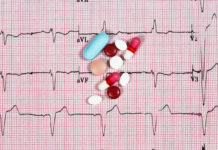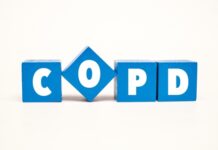According to subsequent analyses of ASPEN trial data, brensocatib 25 mg lessened declines in forced expiratory volume in one second (FEV1), compared to placebo, in all subgroups of patients with non-cystic fibrosis bronchiectasis. The results were presented at the CHEST Annual Meeting in Boston, Massachusetts.
“Non-cystic fibrosis bronchiectasis is a chronic, progressive, inflammatory respiratory disease with diverse causes and variable clinical features,” wrote the authors, led byTimothy R. Aksamit of the Mayo Clinic in Minnesota. The phase 3, randomized, double-blind ASPEN trial assessed brensocatib as a potential treatment for neutrophil-mediated diseases, including bronchiectasis. The drug is a first-in-class, small-molecule, oral, reversible inhibitor of dipeptidyl peptidase 1 (DPP1) that can prevent activation of neutrophil serine proteases, which are mediators of neutrophilic inflammation.
The global study enrolled patients with bronchiectasis and a history of exacerbations in the previous 12 months. Subjects were randomized to receive once daily brensocatib, either 10 or 25 mg, or placebo for one year. Results showed that both doses of brensocatib significantly reduced bronchiectasis exacerbations compared to placebo. The medication also improved lung function; in patients treated with placebo, post-bronchodilator FEV1 measurements declined from baseline to week 52 by 62 mL. In those treated with brensocatib 10 mg, decline averaged 50 mL (P=.3841). In those treated with brensocatib 25 mg, decline averaged 24 mL (P=.0054).
In the subanalyses, the authors examined FEV1 measurements by age, gender, race, ethnicity, number of exacerbations in the previous year, chronic antibiotic use, maintenance use of macrolides, Pseudomonas aeruginosa colonization status, Bronchiectasis Severity Index score, computed tomography score, FEV1 percentage, predicted, region, eosinophil count, smoking status, use of inhaled steroids, history of asthma, history of chronic obstructive pulmonary disease, and hospitalization in the prior 24 months.
The 25 mg dose was associated with less decline in FEV1 at 52 weeks in all subgroups, consistent with the overall trial results. Adverse events (AEs) also aligned with overall study findings. The most common AEs were COVID-19 infection, nasopharyngitis, cough, and headache.
“These results demonstrate that brensocatib has a positive impact on post-bronchodilator FEV1 across all subgroups evaluated, an important observation in a heterogeneous disease like bronchiectasis,” the authors concluded.
Reference
Aksamit TR, Chalmers JD, Burgel P-R,et al. Lung function in patients with non-cystic fibrosis bronchiectasis by prespecified subgroups in the phase 3, randomized, double-blind, placebo-controlled ASPEN trial. Abstract #3185. Presented at the CHEST Annual Meeting; October 6-9, 2024; Boston, Massachusetts.





